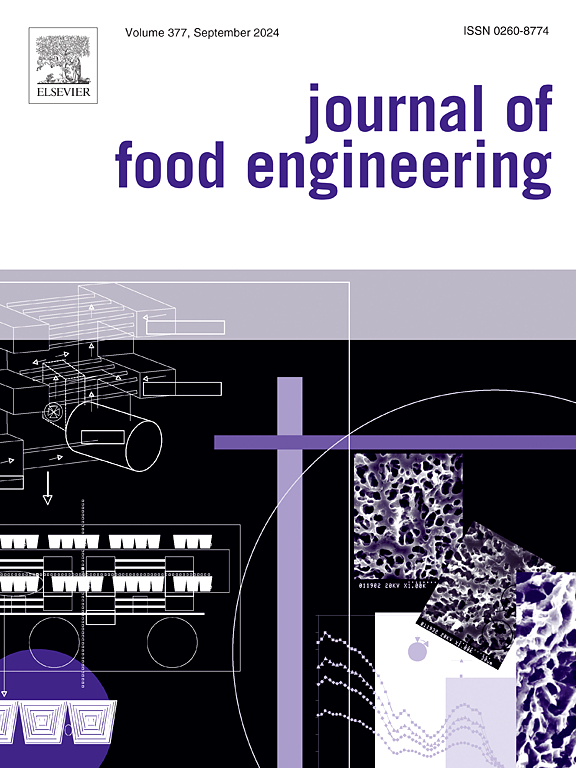Study on electrostatic field assisted freezing temperature storage of grapes
IF 5.3
2区 农林科学
Q1 ENGINEERING, CHEMICAL
引用次数: 0
Abstract
Freezing temperature (FT) storage is an effective way to inhibit the quality deterioration of fruits and vegetables. However, the freeze damage of fruits and vegetables is easy to occur due to the individual freezing point temperatures and the fluctuation of storage temperature during the storage period. Therefore, the freezing temperature storage assisted with high voltage electrostatic field (HVEF) was proposed as an optimization method. The thermodynamic characteristics and storage quality of Sunshine Rose grapes stored at freezing point temperature (−2.0 ∼ −2.4 °C) under different HVEF treatment intensities and methods were studied. The results demonstrated that the cooling rate of grapes treated by HVEF was faster and the freezing temperature was significantly reduced obviously, and this effect is significant with increasing HVEF intensity. Additionally, in aspects of the effects of freeze damage and quality during storage, the spoiled fruits rate and freeze damage rate of the 100 kV/m pretreatment were 14.5% and 8.3%, lower than that of the freezing temperature control group. HVEF of pretreatment and intermittent treatment significantly inhibited the accumulation of malondialdehyde (MDA) and the increase in the total number of colonies and polyphenol oxidase (PPO) activity during storage. The appropriate intensity of HVEF reduced the probability of grape freezing and the proliferation rate of microorganisms during storage, so that there is a higher commodity rate and sensory characteristics. Therefore, HVEF assisted treatment during freezing temperature storage will be a feasible way for further improving grape preservation quality.
静电场辅助葡萄冻温贮藏的研究
冷冻温度贮藏是抑制果蔬品质变质的有效手段。然而,由于水果和蔬菜在贮藏期间的个别冰点温度和贮藏温度的波动,容易发生冻害。因此,提出了高压静电场辅助冷冻蓄温的优化方法。研究了在冰点温度(−2.0 ~−2.4°C)下不同HVEF处理强度和方式下阳光玫瑰葡萄的热力学特性和贮藏品质。结果表明,高温低温处理的葡萄冷却速度更快,冻结温度明显降低,且随高温低温强度的增加而显著降低。在冻害和贮藏品质影响方面,100 kV/m预处理的果实腐坏率和冻害率分别为14.5%和8.3%,低于冷冻温度对照组。HVEF预处理和间歇处理显著抑制了贮藏过程中丙二醛(MDA)的积累、菌落总数和多酚氧化酶(PPO)活性的增加。适当强度的HVEF降低了葡萄在贮藏过程中冻结的概率和微生物的增殖率,从而具有较高的商品率和感官特性。因此,在冻温贮藏过程中,利用HVEF辅助处理将是进一步提高葡萄保鲜品质的可行途径。
本文章由计算机程序翻译,如有差异,请以英文原文为准。
求助全文
约1分钟内获得全文
求助全文
来源期刊

Journal of Food Engineering
工程技术-工程:化工
CiteScore
11.80
自引率
5.50%
发文量
275
审稿时长
24 days
期刊介绍:
The journal publishes original research and review papers on any subject at the interface between food and engineering, particularly those of relevance to industry, including:
Engineering properties of foods, food physics and physical chemistry; processing, measurement, control, packaging, storage and distribution; engineering aspects of the design and production of novel foods and of food service and catering; design and operation of food processes, plant and equipment; economics of food engineering, including the economics of alternative processes.
Accounts of food engineering achievements are of particular value.
 求助内容:
求助内容: 应助结果提醒方式:
应助结果提醒方式:


